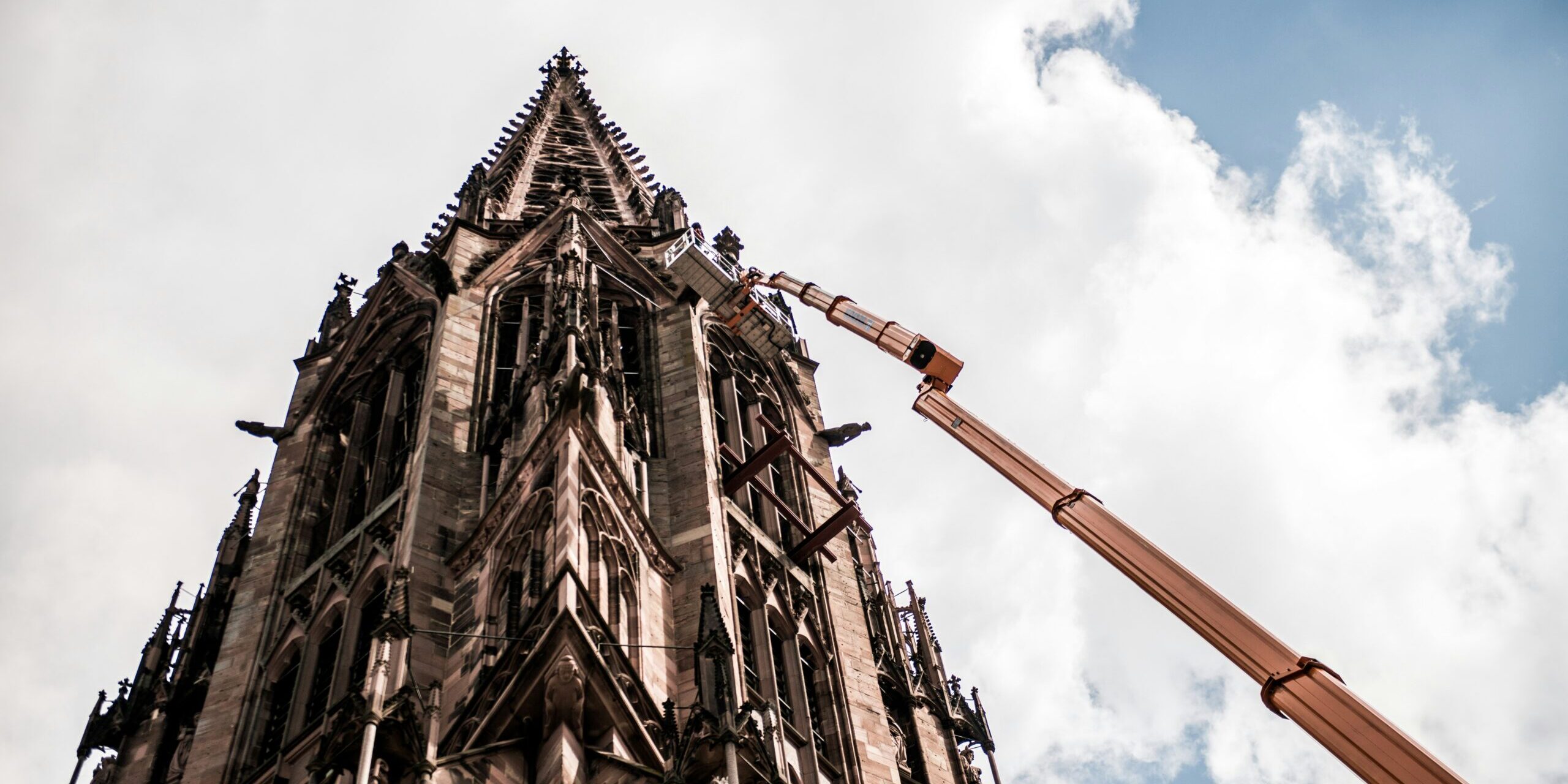Need to hire a MEWP? Whether you’re tackling a construction job, doing some maintenance, or any other project up high, picking the right machine is crucial. Let’s dive into what you need to know: the types of MEWPs available, tips for safe operation, and what to consider for an effective hire.
Key takeaways
- MEWPs, like boom lifts, scissor lifts, and vertical mast lifts, are essential tools for various sectors providing safe access to heights, each with specific features catered to different environments and tasks.
- Choosing the correct MEWP involves a thorough analysis of reach, working height, terrain, and safety features to ensure the equipment meets project needs while complying with industry regulations.
- Choosing to rent rather than buy a MEWP offers a world of financial and logistical benefits: avoid purchase costs, have access to the latest machine models, avoid burdens of ownership like maintenance and storage, and be 100% flexible in choosing a machine by being able to match equipment to each individual project’s requirements.
Understanding MEWPs: Types and applications
Mobile elevated work platforms (MEWP), also known as aerial work platforms, are the tried-and-true machines of vertical ascent, offering powered access to heights unreachable by ladder alone. These mechanical marvels, also known as work platforms, are integral to so many sectors, including construction, building maintenance, and event management.
Whether it’s a nimble boom lift navigating the urban jungle or a sturdy scissor lift ascending on a construction site, MEWPs provide the lift and reach necessary to tackle tasks with safety and precision.
Boom lifts
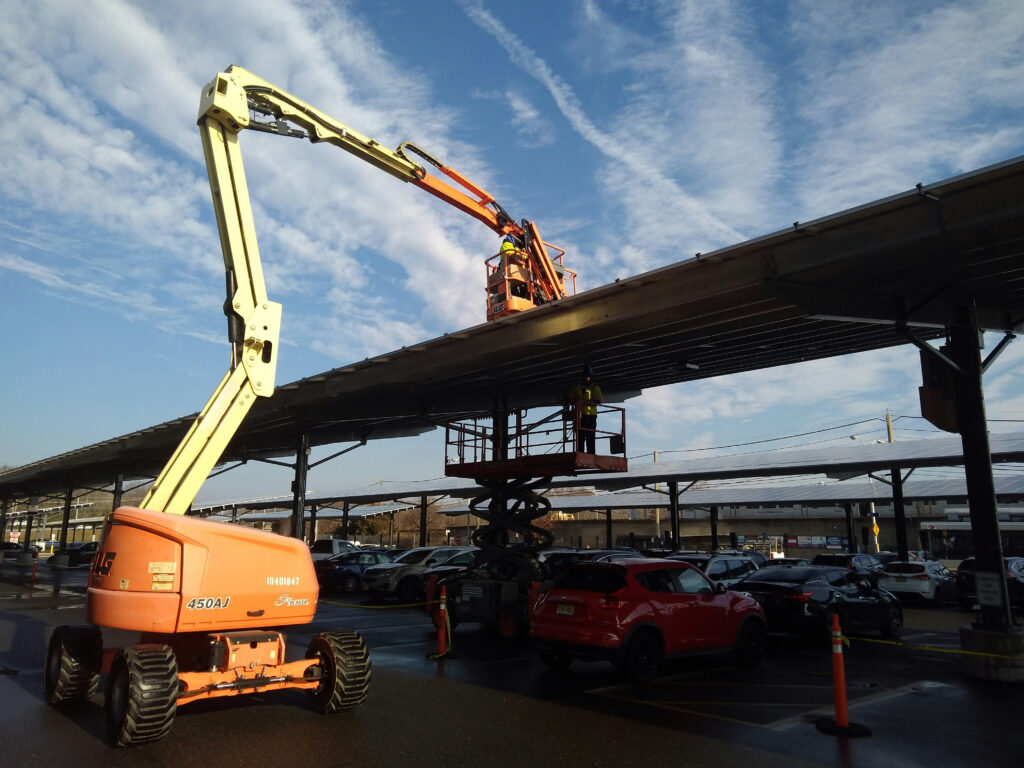
Boom lifts, known for their excellent maneuverability, come in various forms, including bucket trucks and cherry pickers, to meet the demands of diverse industries. Among them, articulated boom lifts, with their significant sideways outreach, conquer outdoor applications and tight spaces with ease.
On the other hand, stick boom lifts have the following features:
- Their long arms extend to skirt around obstacles
- They can reach lofty working heights
- They are versatile machines that enhance job efficiency across a wide range of tasks, from installation to repairs.
Scissor lifts
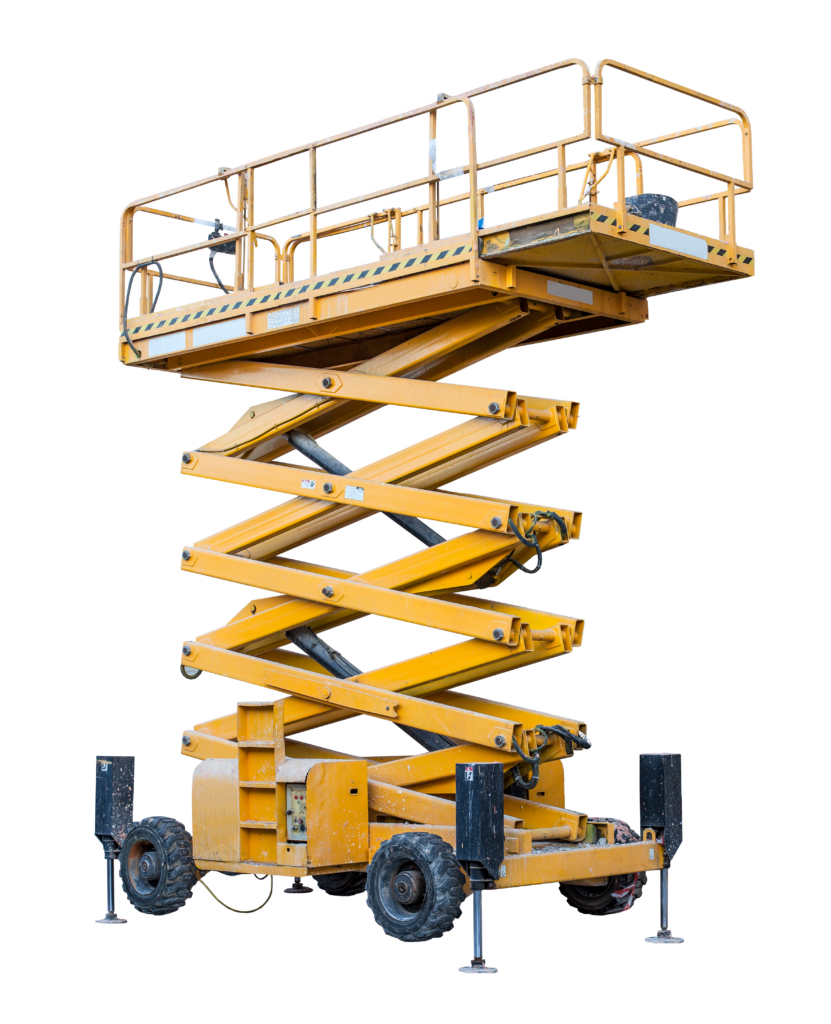
Scissor lifts, which can be either diesel or electric-powered, stand as the reliable workhorses of vertical mobility. Suitable for both indoor grace and outdoor ruggedness, electric scissor lifts provide stable access to mid-level heights, facilitating a spectrum of operations from construction to warehouse logistics. Certain models’ extendable platforms boast not only vertical prowess but also the ability to extend slightly to the side; a testament to their adaptability and to the ingenuity behind their design.
Vertical mast lifts & PAVs
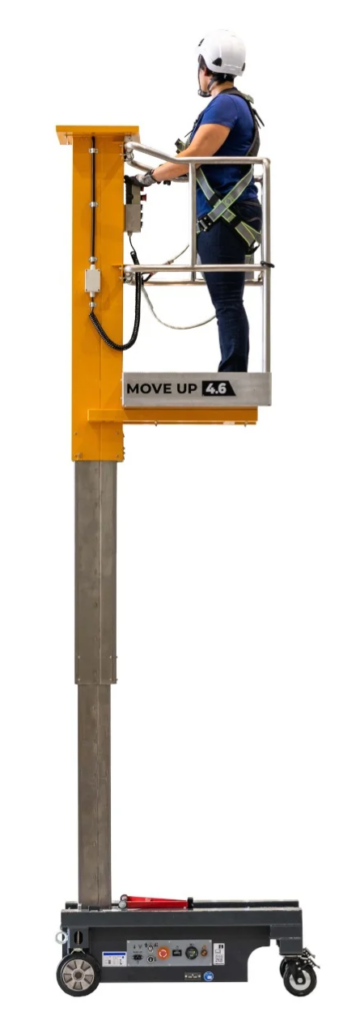
For operations that require finesse over brute height, vertical mast lifts and push around vertical (PAV) platforms come into play. These low-level access platforms, also known as low level platforms, cater to indoor environments where space is at a premium, and quiet operation is non-negotiable. From the aisles of retail stores to the corridors of office buildings, these lifts offer a safe and efficient alternative to ladders, ensuring that even the most delicate tasks are within reach.
Choosing the right MEWP for your project
Selecting the optimal MEWP is more than a matter of preference; it’s a strategic decision that hinges on a trio of critical considerations: reach, terrain, and safety. The goal is to pair your project with a MEWP that not only meets the vertical challenges but also thrives in the environment it will operate in, all while upholding the highest safety standards.
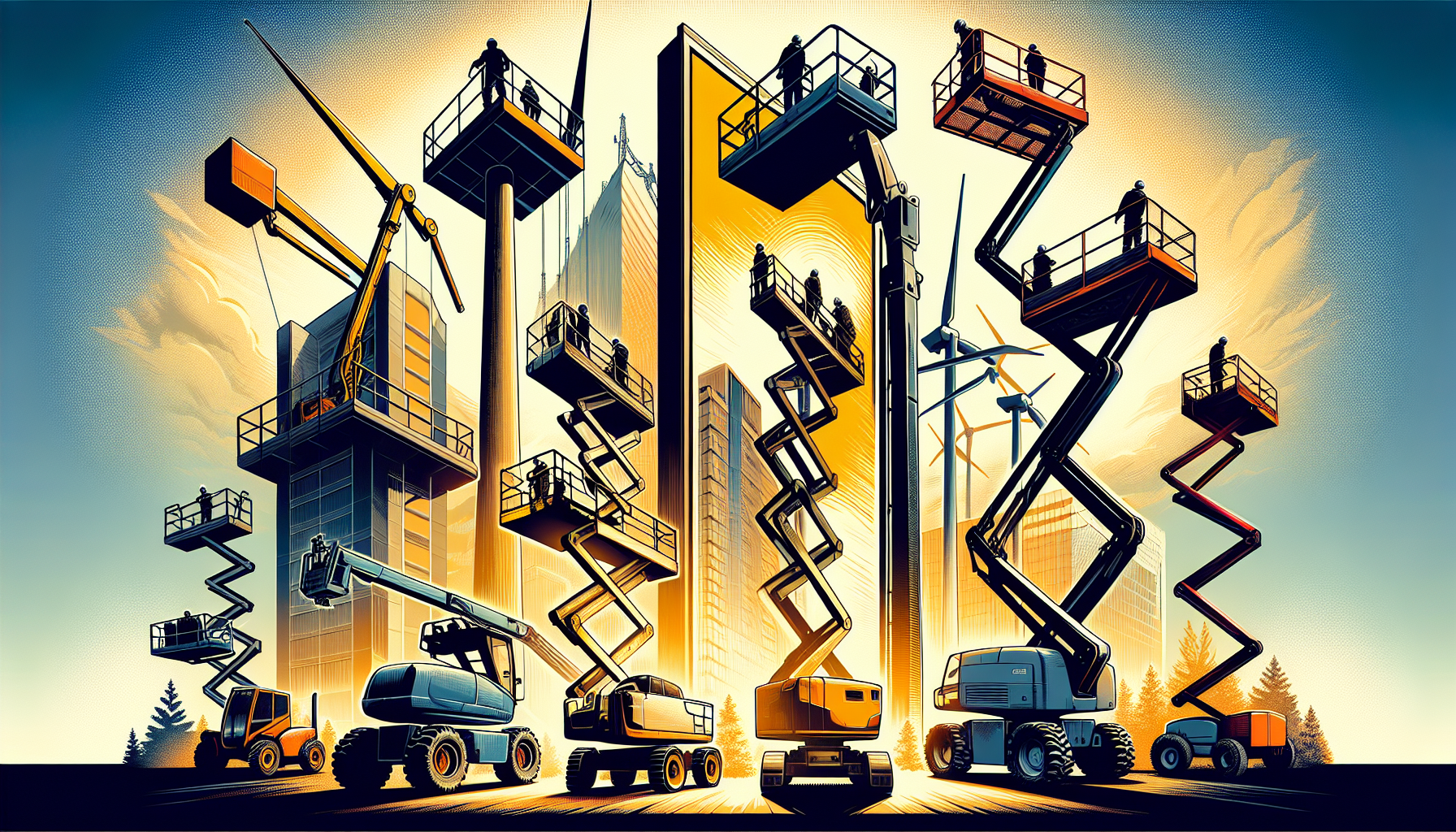
Reach and working height
The quest for the right MEWP begins with establishing the vertical territory it needs to conquer. Calculating the required working height—the sum of the height of the task, the worker’s height, and any additional reach—is a foundational step in ensuring that the selected MEWP offers a safe working margin and the reach necessary to perform the job effectively.
What’s more, the maximum lifting weight is important to consider – will the platform need to lift one person? More?
Different machines have different weight capacities, so accounting for that in the decision of which machine you rent is crucial to being able to carry out your project the way it was anticipated, especially when it comes to how many people need to work on the platform at once.
Environment and terrain
As with all heavy machinery, the terrain beneath a MEWP’s feet can be as influential as the heights it can achieve. Rugged outdoor grounds call for robust machines with four-wheel drive, while indoor projects might necessitate compact lifts that navigate narrow pathways without a trace. And speaking of not leaving a trace, to avoid leaving tire tracks on the floors of indoor spaces, consider renting a MEWP with non-marking tires.
Failure to assess these factors accurately can lead to equipment damage, delays, or worse—compromising the safety of operators and bystanders. What’s more, not taking these factors into consideration before renting a MEWP can lead to renting a machine that is not adapted to your project’s needs.
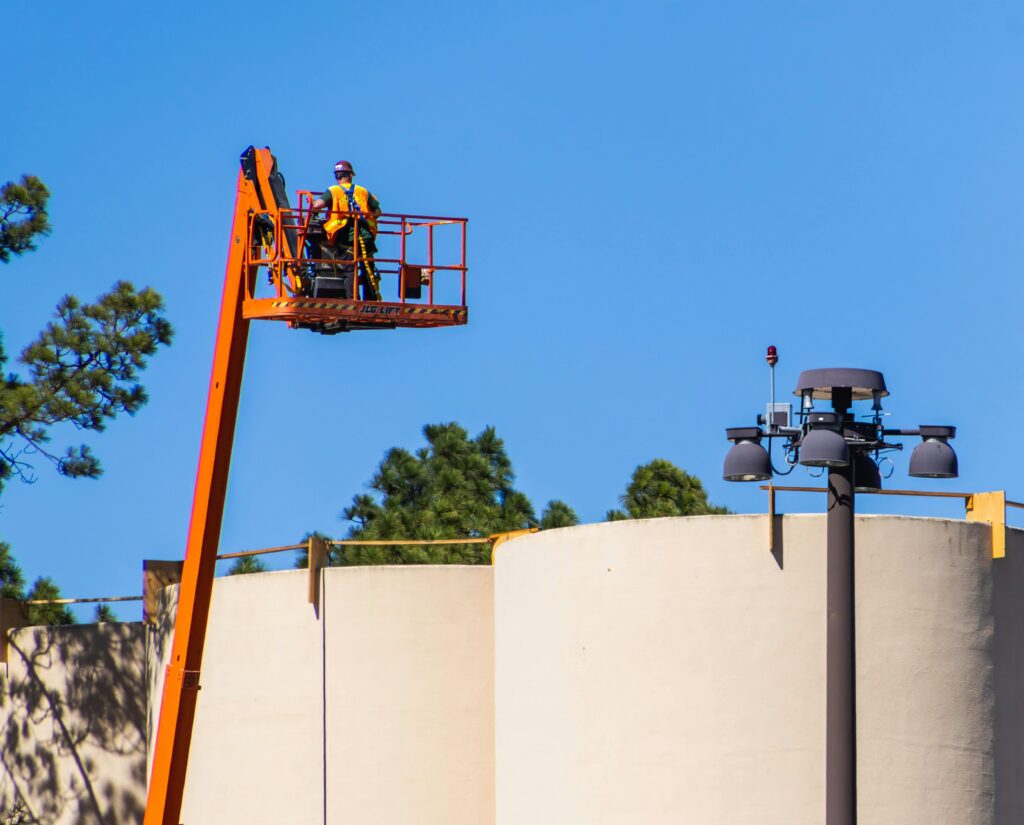
Safety and compliance
Safety is the cornerstone of MEWP operation. Ensuring that your chosen MEWP adheres to safety features—like guardrails, tilt sensors, and the mandatory use of personal protective equipment—aligns with legal compliance and protects against workplace accidents.
Moreover, understanding the nuances of industry regulations, such as those from OSHA or European Norms, is imperative for maintaining a secure working environment.
Renting vs. owning MEWPs: Pros and cons
The decision between renting or owning a MEWP carries significant financial and operational implications. Ownership promises unfettered access but comes with the burdens of maintenance and storage.
MEWP hire, on the other hand, offers flexibility and cost savings, particularly for businesses with an infrequent need for elevated work platforms or lift hire.
Benefits of renting
Renting MEWPs unveils a world of financial and logistical advantages. Here are some of the benefits:
- Foregoing the hefty initial spending required for purchase, businesses can instead tap into a reservoir of the latest models, maintained and delivered by a rental provider
- Flexibility that allows for the precise matching of machine capabilities to project requirements
- Renting avoids the depreciation and ongoing maintenance costs associated with ownership
MEWP training and certification: Ensuring safe operation
Operating a MEWP is a professional task—one that requires specialized training and certification to ensure the safety of the operator and all personnel on site. Whether through in-house programs or those provided by rental companies, the acquisition of proper credentials is a non-negotiable aspect of responsible MEWP operation.
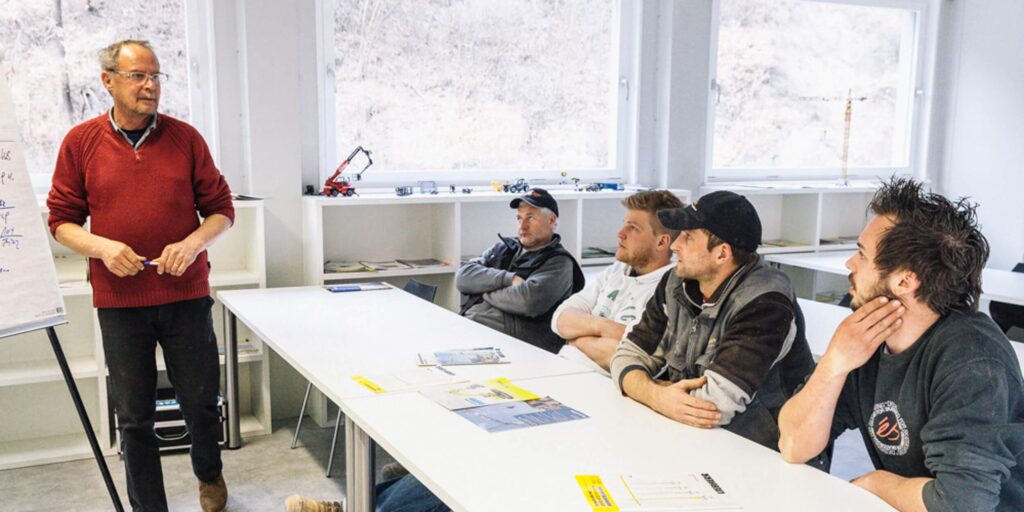
IPAF training categories
The International Powered Access Federation (IPAF) has established an international framework of training categories tailored to the various types of MEWPs, ranging from static vertical lifts to mobile boom lifts. This categorization ensures that operators are equipped with the knowledge and skills specific to the MEWP they will be operating, fostering a culture of safety and proficiency.
Advanced training and “+” symbol
For operators seeking to elevate their expertise, IPAF’s PAL+ advanced training offers a rigorous, practical curriculum designed for high-risk or challenging environments. The coveted ‘+’ symbol on an IPAF PAL Card signifies an operator has met these stringent standards, marking them as a paragon of MEWP operation.
Environmentally friendly options: Electric and bi-energy MEWPs
In a world increasingly conscious of its environmental footprint, electric and bi-energy MEWPs present an eco-friendly alternative to traditional diesel-powered machines. These sustainable options are not only kinder to the planet but also offer tangible benefits in terms of operational costs and versatility.
Electric MEWPs
Electric MEWPs are the silent guardians of clean air, eliminating emissions and reducing noise pollution—an ideal choice for indoor use and environmentally sensitive areas. The cost-effectiveness of charging over refueling is an added boon for businesses looking to reduce operational costs while being green.
Bi-energy MEWPs
Bi-Energy MEWPs offer the following benefits:
- They harness the power of both electricity and an alternative fuel source
- They deliver the flexibility to transition between indoor and outdoor environments seamlessly
- They ensure that operators can maintain productivity without compromising on environmental considerations
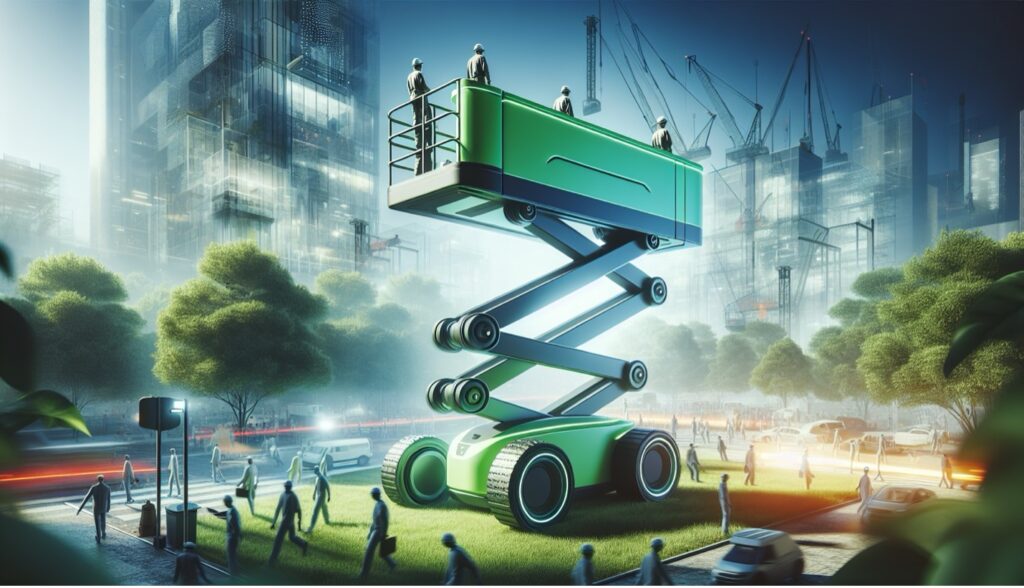
Managing your MEWP fleet: Tips for multi-site operations
For businesses juggling a MEWP fleet across multiple sites, strategic facilities management is key to maximizing efficiency and utilization. From advanced tracking systems to preventative maintenance schedules, the orchestration of a MEWP fleet is a complex yet rewarding endeavor that requires a meticulous approach.
Centralized platform management
Centralized platform management systems provide a bird’s-eye view of a MEWP fleet’s status, facilitating data-driven decisions on deployment, maintenance, and compliance. These systems streamline operations, ensuring that the right MEWP is in the right place at the right time, fostering an environment of optimal productivity.
Preventative maintenance
An ounce of prevention is worth a pound of cure, especially when it comes to MEWPs. Regular maintenance and rigorous inspections not only safeguard the longevity of the equipment but also ensure operational safety. Implementing a preventative maintenance strategy is a critical responsibility for fleet managers, one that pays dividends in reliability and peace of mind.
MEWP hire costs
Navigating the financial landscape of MEWP rental costs requires an understanding of the elements that shape pricing. From the type of platform to the MEWP hire duration and additional fees, these factors collectively determine the final cost, painting a holistic picture of what businesses can expect to invest in their aerial endeavors.
Three main factors that determine MEWP rental costs
The MEWP hire cost puzzle is pieced together by three main factors:
- Type of platform
- Rental duration
- Transportation logistics
These components, in concert with market conditions and equipment specifications, play a definitive role in shaping the price tag of renting access equipment, such as a MEWP.
MEWP hire costs by type
There is a rich diversity of MEWPs on the market, from truck-mounted aerial platforms to spider lifts, and each carries a distinct cost profile. Factors such as condition, location, and operator requirements further influence MEWP hire charges, with market dynamics and special features adding layers of complexity to the pricing structure.
MEWP hire on rentmas
When the time comes to elevate your work to new heights, rentmas is the top online destination for MEWP rental. With a user-friendly platform that simplifies the rental process, rentmas offers a vast selection of aerial work platforms suitable for any project.
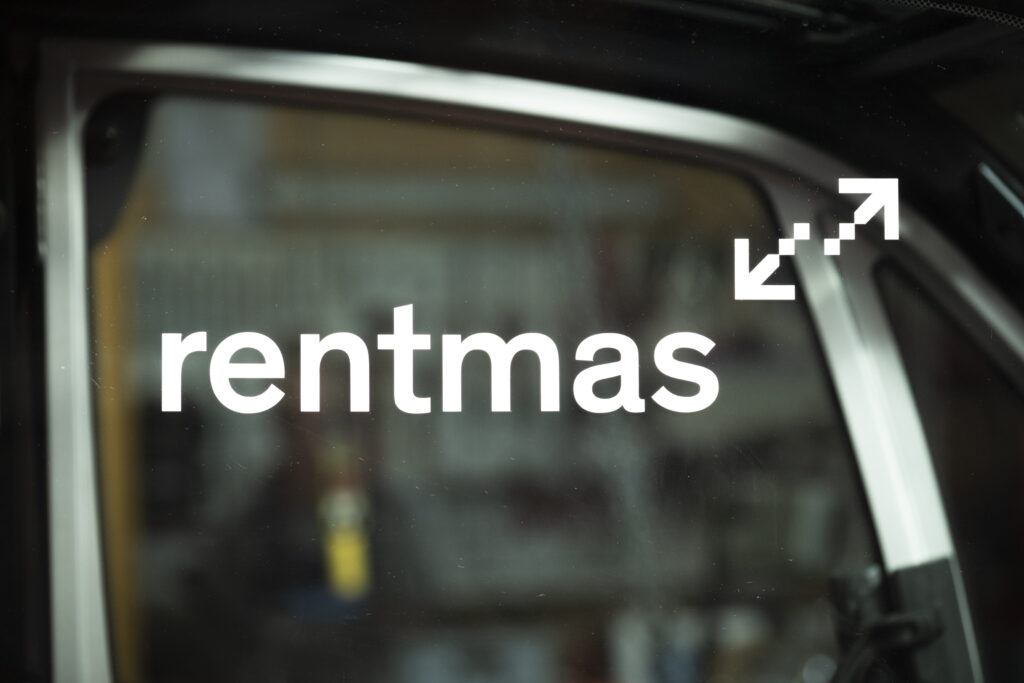
How rentmas transforms your rental experience
rentmas.net is designed with the customer in mind, providing a hassle-free MEWP hire experience that includes:
- An extensive inventory of MEWPs, including boom lifts, scissor lifts, and vertical mast lifts, to cater to diverse project needs.
- Detailed descriptions and specifications for each MEWP, ensuring you make an informed decision tailored to your project’s unique requirements.
- Transparent pricing and availability, allowing you to budget and plan your project with precision.
- Expert advice and support from a team of seasoned professionals who can guide you through the selection process.
The convenience of online booking
With rentmas, you can browse and book your desired MEWP from the comfort of your office or on-the-go:
- Access real-time availability and reserve a MEWP 24/7
- Compare different models and features side-by-side to find the perfect match for your job
- Secure your MEWP hire with just a few clicks, saving you time and effort
Tailored solutions for every project
Whether you’re working on a construction site, performing maintenance tasks, or setting up for an event, rentmas has the MEWP to meet your needs:
- Choose from a range of MEWPs to suit indoor and outdoor environments
- Filter search results by working height, lift capacity, and other crucial criteria
- Benefit from flexible rental durations, whether you need a MEWP for a day, a week, or longer
Summary
From the soaring heights of boom lifts to the indoor agility of vertical mast lifts, MEWPs empower businesses to tackle aerial tasks with unparalleled efficiency and safety. Whether opting to rent or own, understanding MEWPs’ types, applications, and the importance of training and environmental considerations ensures operations ascend in productivity and safety. Armed with this knowledge, you can confidently harness the vertical potential of MEWPs for your next project.
Frequently Asked Questions
What does MEWP stand for?
MEWP stands for Mobile Elevated Work Platform, which is a powered access machine used to operate at height in various environments.
What is an example of a MEWP?
Some examples of MEWPs include electric or rough terrain scissor lifts and self-propelled vertical mast lifts.
Is a MEWP the same as a scissor lift?
A MEWP (Mobile Elevating Work Platform) is a category that includes various types of aerial work platforms, including scissor lifts. While a scissor lift is a type of MEWP, it’s not the only kind. MEWPs can also include boom lifts, cherry pickers, and other types of elevated platforms used for working at height.
Scissor lifts are characterized by their crisscrossing supports that extend upward, providing a stable platform for workers and equipment. So, in summary, while all scissor lifts are MEWPs, not all MEWPs are scissor lifts.
Is a MEWP a cherry picker?
Not exactly. A cherry picker is a type of MEWP (mobile elevated working platform), but not all MEWPs are cherry pickers. A cherry picker typically refers to a type of elevated work platform with a hydraulic arm or boom fitted with a bucket or platform at the end, allowing workers to reach high places, such as trees, utility poles, or building exteriors. So, similarly to scissor lifts, cherry pickers fall under the broader category of MEWPs.
How much does it cost to rent a MEWP?
MEWP rentals range dynamically in price based on machine type, length of the rental, and cost of transport.
Base daily prices for MEWPs range from €17 to €517 per day. Broken down by category, reasonable base prices to expect are: €129/day for a bucket truck, €20 – €464/day for a scissor lift, €76 – €289/day for a telescopic boom lift, €91 – €517/day for a tracked aerial lift, €56 – €332/day for an articulating boom lift, and €17 – €135/day for a vertical mast lift.
As a rule of thumb, the longer the rental, the cheaper the daily price of the machine, and the longer the distance the machine needs to be transported, the higher the transport costs. rentmas always finds the machines closest to your project site to keep your transports costs as low as possible.
How much does it cost to rent a telescopic boom lift?
The base rental price of a telescopic boom lift is between €76 and €289 per day. However, the longer the machine is rented, the lower the daily rental fee.
Transport costs must also be taken into consideration, because the further the machine has to travel to the project site, the higher the transport costs will be. rentmas always finds the machines closest to your project site to keep your transports costs as low as possible.
What are the primary considerations when choosing a MEWP?
When choosing a MEWP, it’s essential to consider factors such as reach, environment, job requirements, and safety protocols for the specific task at hand. These factors will help ensure the right equipment is selected for the job.
